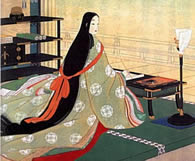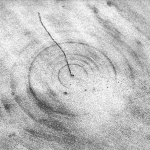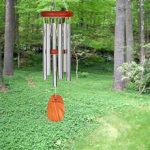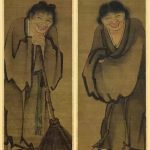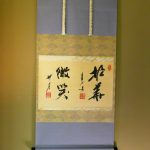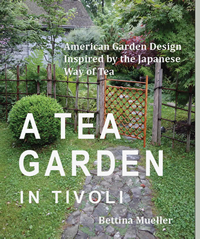Zen Sand
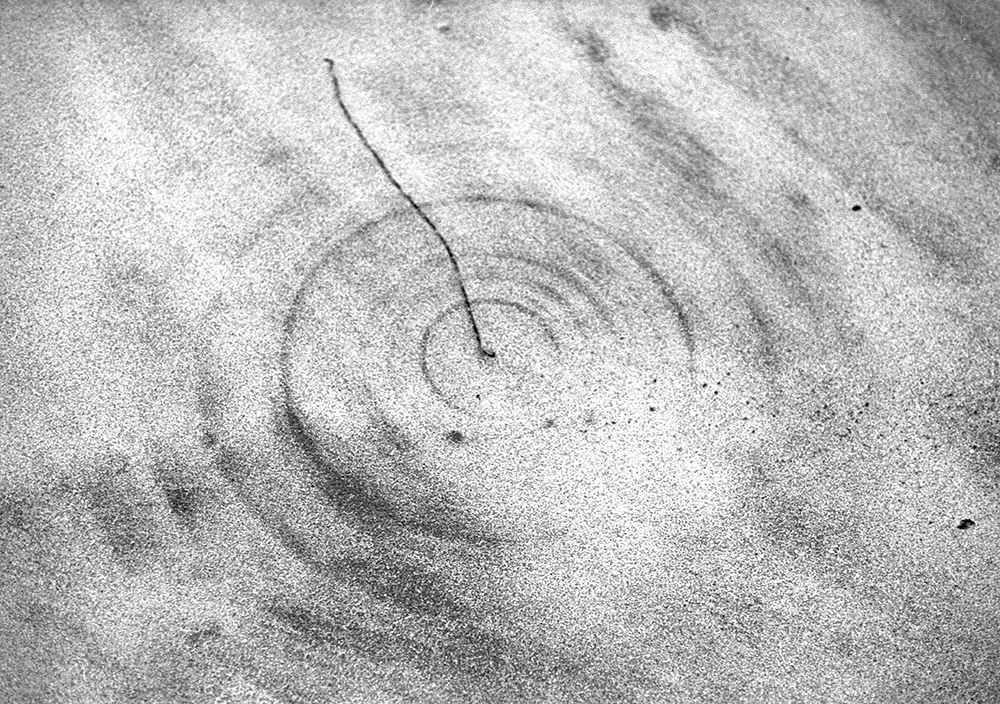
Bamboo shadows sweep the stairs
The dust does not move
Moonlight pierces to the pool’s bottom
The water is unmarked.
Wind and the chimes
 It was early summer and cold. The window of the Tea House was opened just a crack and the wind was fierce and strong. It kept blowing the wind chimes that hung outside from the eve of the roof.
It was early summer and cold. The window of the Tea House was opened just a crack and the wind was fierce and strong. It kept blowing the wind chimes that hung outside from the eve of the roof.
They were loud and harsh, not like their usual soft, tonal chiming. It was distracting. I wanted the peaceful silence, the bird song, the sound of squirrels jumping on the roof.
Then I realized that I could use that distraction to come back to my breath. It seems so obvious now. It’s something we always practice in zazen. Come back to the breath. Count from one to ten, then back again.
Even though I’ve been practicing this for over thirty years – it was new. I realized that everything could be a reminder to come back to the present, even things that are difficult. At once, I felt grateful for everything. I felt that everything supported my life: the discordant bells, the birds, the sound of the train, traffic from the road, the laughter of kids playing next door.
Zazen is always new and full of surprises – to be more accurate, this life is always new and full of surprises.
The great Zen master Hakuin had a similar experience. He was sitting in a place like the Tea House. He had been sitting for five days for sesshin. His mind was lucid and quiet. It was an early dawn morning, the light was dim, and he heard the crows outside waking up. When the temple bell rang he realized, “That ringing. That ringing! That is me ringing! That is me ringing!
His still and clear mind had been pierced through by the bell’s sound, and that and every moment was full of deep wonder.
Less is more
My neighbor is moving and invited me over to look through boxes of free stuff. That morning, I had just been up in my attic which I access by crawling up a rickety, steep staircase inside a closet. It’s easier to get stuff up there than it is to get it down. There are boxes and boxes of receipts and invoices from over ten years ago, there are window fans, old useless canvas suitcases that don’t have spinning wheels, obsolete computer monitors – even an old Apple Mac, one of the originals.
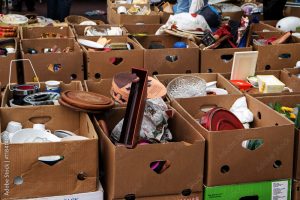
So, when my neighbor called me over by saying, “You probably don’t need anything,” he was right but I dutifully looked through some books and a large box filled with women’s shoes, size 7. I was intrigued by a pair of silver, high-heeled sandals but I’ve never worn high heels and they were too small anyway.
There was nothing there for me and I didn’t want to tell my partner Ken about it because he collects books. He has a storage unit devoted to books he can’t fit on our bookshelves. But I should talk. How many kitchen whisks or colanders do I really need? How many saute pans do I use, even though each one has its own particular characteristic? What about all the empty jars waiting for just that right time to fill them with leftovers? How many do I need?
I haven’t read any books by Marie Kondo who launched a huge movement of cleanup. She’s made millions by encouraging readers to fold t-shirts and socks in a certain way to give order to chaos. I am in awe of people who carefully match up their socks and fold them in a ball. My sock drawer is out of control. How many socks do I really need and why do I lose one sock in a pair all the time?
I’m constantly trying to weed away stuff I don’t need but I’m living with a man who loves to have extras of everything. He buys three or four pounds of butter at a time just to make sure we don’t run out. The freezer is overflowing with butter. When he buys a pair of sneakers, he buys two pairs just in case that model gets discontinued. I notice he’s buying duos of books, “Why?” I ask. “For a friend,” he says.
My mother was a pack rat. Strangely for an artist, she never seemed to have any pencils or pens around. I bought her six-packs from the Office Depot but when I visited a couple of days later, they would all be gone. Where to? It was only after she died that I found fifty pencils and pens stashed neatly away at the back of a bottom drawer – never used. She had an old barn in the back and when we cleared it out we found three Weber grills. I think it was easier for her to buy a new one than sort through all the stuff in the barn to find the old ones.
I think back to my days at the Zen monastery. For a week-long retreat we each had a tea cup to use twice a day. The teacup sat upside down on a small white paper napkin. Every time we tipped the cup over to rest on the paper it left a small round stain from the coffee or tea. We didn’t get a new paper every day. Instead, we used the old one and folded it inside and out until it was replaced after four days.
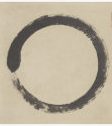
Yesterday I was in a store that specializes in Japanese things: little tiny plates in green glaze called Mei Mei Zara, square cloths for wrapping objects with a pattern of plum blossoms, flower vases, some lacquer objects that were old and chipped, and tea bowls.
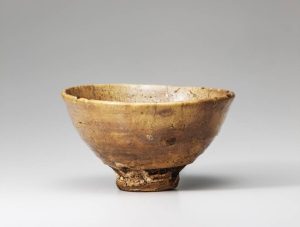 One in particular caught my eye. It was a Korean-style bowl with a lovely feel. I could have bought it in a second. It was very wabi with an understated beauty and lack of artifice as though created for eating rice and then found by some tea master and loved for its quiet purity.
One in particular caught my eye. It was a Korean-style bowl with a lovely feel. I could have bought it in a second. It was very wabi with an understated beauty and lack of artifice as though created for eating rice and then found by some tea master and loved for its quiet purity.
But I don’t need any tea bowls. I have a number of them that have been given to me over the years which I store away in their wooden boxes and bring out for special occasions. There’s a blue Mino glazed tea bowl with a white enso circle on the front which was given the name “Toy with Flowers.” I have another bowl I found when I was in Japan at the Toji market. It’s a Hagi bowl with a creamy, faint pink glaze and it reminds me of that wonderful trip.
While the Korean bowl in the Connecticut shop was fantastic, it was also very expensive – and I didn’t need it. What is enough? Until I make tea for friends at least once a week I won’t collect any more utensils. The few bowls I have are perfect.
One of the great aspects of a tea gathering is that it’s a one-time event. It will never be repeated. The guests will not be the same, the seasons and therefore the objects in the room including the scroll which sets the theme, will never be the same. At the end of the gathering, everything is put away in their boxes and stored until the next time. The tea room is empty, waiting to be filled not with more stuff but with particular favored objects that are filled with meaning and beauty.
Perhaps this is the quality of beauty that we’re looking for. A beauty in our lives that is sufficient as it is.


